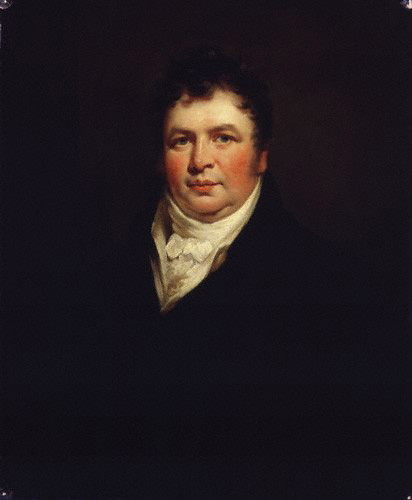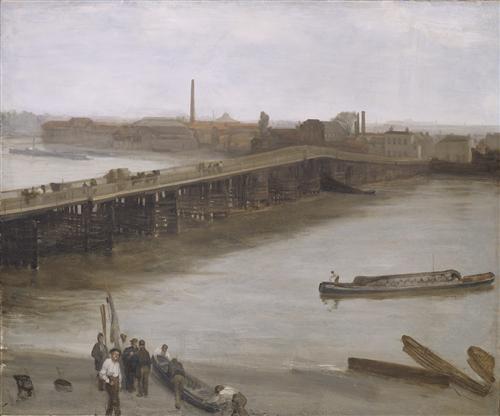In A Morning’s Walk from London to Kew, published in 1817, Sir Richard Phillips set off to explore the developing outskirts of the capital like a Georgian perambulating Michael Portillo. On his journey he stopped at sawmills and workhouses, setting down what came into his head including the "evils of machinery", "ghosts (vulgar belief in)" and perplexingly, "females on fire (mode of extinguishing)". In this abridged extract we accompany Phillips as far as the asparagus fields of Battersea.

With no guide besides a map of the country round the metropolis, and no settled purpose beyond what the weather might govern, I strolled towards St James's Park.
On my entrance into the park, I was amused and interested by an assemblage of 100 mothers, nurses, and valetudinarians, accompanied by as many children, who are drawn together at this hour every fine morning by the metropolitan luxury of milk warm from the cow.
I remarked that few were walking in my direction; but that all the faces and foot-steps were earnestly directed towards London. I amused myself with a calculation of the probable number of persons who thus every day, between 8am and 6pm, pass to and from London within a distance of seven miles. It appears that the total will be 16,000 persons. Such a phenomenon is presented no-where else in the world.
The water-works, to the left of the road, supply Pimlico and part of Westminster with water, and, I may add, with smoke, of which it emits large volumes.

On entering Chelsea, I was naturally led to inquire for the Ranelagh! I met a working man, who told me that Ranelagh had been pulled down. A few inequalities appeared in the ground, indicative of some former building, and holes filled with muddy water shewed the foundation walls — but the rest of the space, making about two acres, was covered with clusters of tall nettles, thistles, and docks! I traced the circular foundation of the rotunda and the site of the orchestra, where I had often been ravished by the finest performances of music! Here, but seven years have flown away, and I was myself in one of the gayest scenes which the art of man could devise.
I turned the corner. Before me appeared the shops so famed for Chelsea buns, which, for above 30 years, I have never passed without filling my pockets. These buns have afforded a competency, and even wealth; to four generations of the same family; and their delicate flavour, lightness and richness, have never been successfully imitated. The present proprietor told me, with exultation, that George the Second had often been a customer of the shop; that the present King had stopped and purchased his buns.
The approach to the Hospital was indicated by the appearance of numbers of mutilated soldiers. I accosted a young man, who had lost both arms. After some expressions of commiseration, I enquired by what mischance he had met with so untoward a wound? He told me that he was loading his musket, when a cannon-ball carried off one arm, and so shattered the other, that it was necessary to amputate. But, said I, you are of course well provided for in the hospital — "No," (he replied,) "there is not room for me at present. I cannot dress myself, nor even eat or drink, but am obliged to be fed like a child; I have a poor old mother who does her best for me." Shewing him a shilling, I put it between his lips!

In crossing the bridge to Battersea, I was called upon to pay toll, and was informed, that this bridge is private property. A bridge across a great river, in a civilised country, private property! — Is not this monstrous, thought I, in a country in which seventy millions of taxes are collected per annum.
At a few yards from the toll-gate of the bridge, on the western side of the road, stand the work-shops of that eminent, modest, and persevering mechanic, Mr Brunel; a gentleman of the rarest genius. In a small building on the left, I was attracted by the solemn action of a steam-engine of a 16-horse or 80-men power, and was ushered into a room, where it turned, by means of bands, four wheels fringed with fine saws, two of 18 feet in diameter. I beheld planks of mahogany and rose-wood sawed into veneers the 16th of an inch thick, with a precision and grandeur of action which really was sublime!
In another building, I was shewn his manufactory of shoes. Every step in it is effected by the most elegant and precise machinery. As each man performs but one step in the process, which implies no knowledge of what is done by those who go before or follow him, so the persons employed are not shoemakers, but wounded soldiers, who are able to learn their respective duties in a few hours.
We enjoy more luxuries at less cost of human labour. No race of workmen being proverbially more industrious than shoemakers, it is unreasonable, that valuable members of society should be injured by improvements benefitting the whole. The low price of labour deprives these classes of the power of accumulating any private fund, on which to subsist while they are learning new trades; it seems therefore incumbent on governments to make provision, from the public stock, for all cases of distress, which arise out of changes of this kind.
I passed from the premises of Mr Brunel, to the adjoining ones of Mr Hodgson, an intelligent maltster and distiller, and the proprietor of the elevated horizontal air-mill, which serves as a landmark for many miles round. In ascending the winding flights of its tottering galleries, I could not help wondering at the caprice of events which had converted the dwelling of Bolingbroke into a malting-house and a mill. This house, once sacred to philosophy and poetry, is now appropriated to the lowest uses! The spot on which the Essay on Man was concocted, converted into a distillery of pernicious spirits!
It was in the warm alluvial plain adjoining this village, that the first asparagus was cultivated in England. I could learn no particulars of this circumstance, but such vast quantities are still grown here, that one gardener has 50 acres engaged in the production of this vegetable, and there are above 200 acres of it within a mile of Battersea church.



